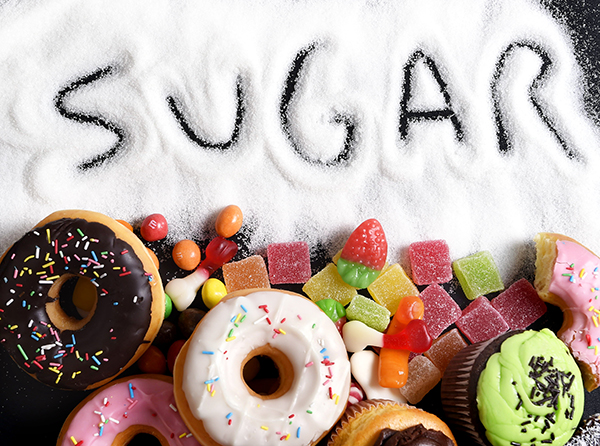People who have diabetes have a common question that says, “how much sugar can I consume?” If you have diabetes, people around you might tell you that sugar works like a poison for you. You might have been told to watch your sugar intake. But, does this mean that you can’t ever eat sugar? Well, this article will help you to know how much sugar you should consume if you have diabetes. Thus, all those people who are diabetic but have a sweet tooth should read this article.
In this article, we will also discuss how sugar impacts your blood sugar level, and you can identify hidden sugar. You will also get tips about choosing better carbs and how to stick to a diabetes-friendly diet.

What is the safe level of sugar?
People these days eat too much sugar, and they don’t have any idea about where to draw the line so that they don’t have diabetes. As per a survey conducted in 2016, it was found that an average adult consumes at least 77 grams of added sugar per day. Children consumed 82 grams of sugar per day.
This number is way above the daily limit recommended by health organizations and doctors.
As per recommendation, the following is the safe level of sugar:
- Men: 36 grams (9 teaspoons)
- Women: 24 grams (6 teaspoons)
- Children: less than 24 grams (6 teaspoons)
If you are facing the wrath of diabetes, your healthcare provider will advise you to eat sugar less than the recommended amount. With a typical diet, you can quickly reach your sugar limit at breakfast. A simple pastry and a couple of cups of coffee will be more than what’s safe for you.
Identify the hidden sugar
If you want to keep your blood sugar level in control, it is important to identify how much sugar is hidden in packaged food and drinks. Even when you read food labels, you might not be aware that sugar can go by another name.
Names to identify when you want to know about hidden sugar:
- Agave nectar
- High fructose corn sugar
- Honey
- Fructose
- Maltose
- Molasses
- Rice syrup
- Sucrose
Different types of sugar can have the same impact on the level of blood sugar. Don’t have a false belief that natural sugars are better for you. You can also overdo it by eating natural sugar derived from natural food sources. Natural sugar, as well as processed sugar, are broken down into glucose and fructose.
Glucose: It is a type of sugar that our body uses for energy needed by the cells in our body
Fructose: Fructose can only get metabolized by our liver. The sugar is then converted into fat, and it results in increased insulin resistance. In the long run, high levels of fructose can cause fatty liver as well as other complications.
What are the common sources of added sugars?
You may not believe this, but there are 100s of added sources of sugar that we don’t pay attention to when we are eating. Some of the few examples of added sugars include:
- Flavored yogurt: 26 grams in each ounce
- Granola bars: 7 to 12 grams in per 70-gram bar
- Jarred spaghetti sauce: 11-grams in half cup
- Peanut butter: 5 grams in one tablespoon
- Protein bars”23-30 grams in 80-gram bar
- Russian salad dressing”3 grams in each tablespoon
- Sweetened apple juice
- Vanilla almond milk
But, don’t worry because most of these food items have sugar-free versions too. Thus, you can enjoy them without worrying about your diabetes.
Choose better carbohydrates
The blood glucose level in your body is affected by the presence of complex carbohydrates (starches) and simple carbohydrates (sugar). These are different ways to include sugar in your diet without going overboard.
- Track your daily intake of carbs. Try to choose food items that are low in Glycemic Index (GI). The GI index measures the impact of different food items on the blood sugar level.
- Look for carbohydrate-rich food that contains less than 10 grams of sugar. You can check the nutritional label on the packaging to find the number. The higher the level of fiber in your food, the fewer carbs the food will absorb with each meal or snack.
- If you want to eat something sweet, try to avoid carbohydrates. For example, if you want to have a slice of cake after dinner, try to cut the portion of rice and bread from your meal. This way, you will be able to eat sweets without worrying about an increase in your blood sugar level.
Conclusion
Having diabetes and not being able to eat anything sweet is really a sad story. But, it does not mean that you can’t eat sugar ever. All you need to do is to be aware of hidden sugar. You need to know what percentage of daily calorie intake comes from sugar. Thus, try to read the food label, choose high-fiber and low-carb food.
We hope this article will help you in knowing how much sugar you can consume if you have diabetes.